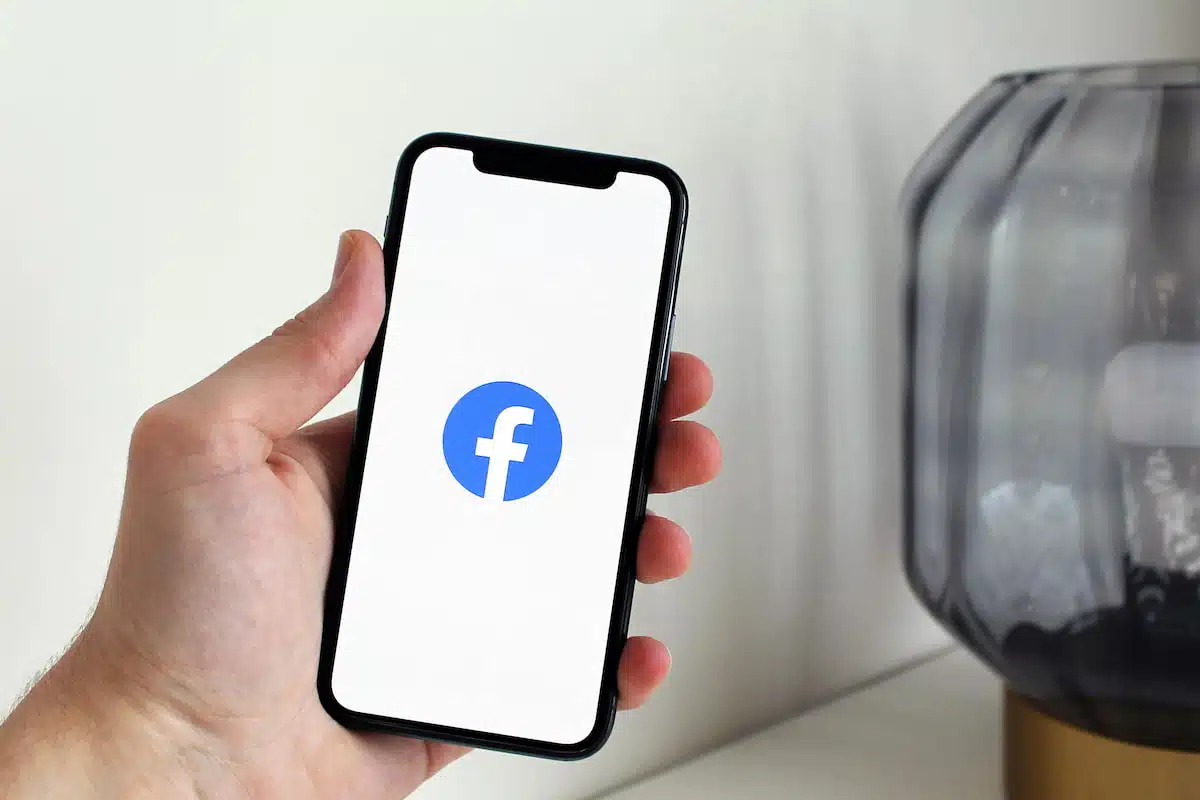What makes a Facebook ad pop in a crowded news feed? Countless users scroll through their Facebook news feeds daily, and capturing their attention requires more than just a viral Facebook reel, a catchy image, or a clever tagline. It calls for creativity, strategy, and a deep understanding of your target audience.
From video ads that tell compelling stories to carousel ads that showcase multiple products, Facebook advertising has become essential for businesses aiming to boost brand awareness, drive traffic, and generate leads. This blog will dive into the nine best Facebook advertising examples that have captured attention and delivered impressive results.
Why Facebook Ads Are Crucial for Your Business Success
Facebook has become invaluable for businesses of all shapes and sizes. The social media platform offers unparalleled reach, with about 2.45 billion monthly active users, making it one of the most effective platforms for reaching your target audience.
With its powerful targeting capabilities and reach, Facebook lets you zero in on your specific target audience based on demographics, interests, behaviors, and even past interactions with your brand. This precision ensures efficient ad spend, reaching the most likely people to engage with your content and become customers.
However, effective social media advertising requires more than just reach—it also involves impact. A great Facebook ad does more than attract users; it drives meaningful engagement, builds trust, moves them through your sales funnel, and transforms casual scrollers into loyal buyers.
9 Best Facebook Advertising Examples of All Time

Some Facebook ad campaigns rise above the rest, setting benchmarks for creativity, engagement, and impact. These nine Facebook ad examples prove that well-crafted social media content can transform a brand’s online presence.
1. Bloomberg Media – Simple Yet Impactful Image Ads
Bloomberg Media’s Facebook advertising strategy proves that sometimes, less is more.
They leveraged high-quality, professional photography and eye-catching visuals in their image ads, capturing attention in the crowded news feed. Beyond aesthetics, Bloomberg’s ads paired strong visuals with strategic, impactful messaging.
They ran a simple yet brilliant A/B test to measure the effectiveness of different ad creatives. One version of their Facebook ad featured only the sales price of a Bloomberg subscription. The other version featured the sales price and the original price shown in strikethrough.
The version that ran the strikethrough price—showcasing the discount—lowered the cost per subscription conversion by 50%. This approach allowed them to pique the interest of their specific target audience and drive them to their website or landing page.
2. Jukebox – Mobile-Friendly Video Ads That Engage
Video content rules supreme in Facebook advertising. Jukebox, a women’s personal care brand, demonstrated the power of tailoring video ad creatives to specific platforms and features. They strategically produced video ads on Facebook and Instagram, particularly focusing on the Reels format, to increase brand awareness and generate leads.
Their Instagram and Facebook video ads were crafted to capture attention in just a few seconds. They featured a beautiful showcase of their products, with names inspired by hit songs and each paired with a unique Spotify playlist, turning daily personal care routines into joyful, sensorial moments.
The personal care brand saw a 15-point lift in ad recall. Their use of the vertical format, optimized for mobile viewing, ensured that the ads felt native to the Facebook feed and Instagram Reels, making them seamless and non-disruptive for users. Their ad campaign showed how understanding platform nuances and showcasing your unique brand through engaging content optimized for the context in which it will be viewed can drive success.
3. Lipton France – User-Generated Content (UGC) That Connects
In a world increasingly numb to traditional advertising, Lipton France tapped into the power of user-generated content (UGC) to create one of the best Facebook advertising campaigns ever. By leveraging partnership ads featuring content creators on Facebook and Instagram, they built trust and drove impressive engagement and sales.
They partnered with content creators who genuinely enjoyed their products, allowing these users to create and share their authentic content featuring Lipton teas. These user-generated content posts felt authentic and relatable, showcasing the product in real-life settings rather than in a polished studio environment.
The partnership ad allowed Lipton France to associate their brand with positive user experiences. Instagram and Facebook users seeing their favorite content creators enjoy Lipton tea likely encouraged them to try it themselves. This approach prioritized authenticity and resonated well with their specific target audience, highlighting the value of establishing emotional connections, genuine experiences, and relatable voices.
4. Oreo – Driving Engagement Through Exciting Sweepstakes
Oreo showcased a classic staple of old-school advertising: sweepstakes. Using lead ads on Meta apps, Oreo created a fun and interactive promotion that encouraged cookie lovers to participate in sweepstakes. It proved that well-executed sweepstakes can be among the top Facebook ads for fostering interaction and driving clicks.
Oreo ran a bold test, offering two prizes: cash or cookies for life. To create buzz for a sweepstakes contest, Oreo ran ads on the exterior of Sphere in Las Vegas alongside two lead ad campaigns on Meta apps. They used the footage in a Meta lead ad asking consumers to guess how many cookies would fill the sphere to win a lifetime supply of Oreo cookies. Oreo also offered various prizes on Meta apps, including a $50,000 contest and gaming consoles.
The sweepstakes format invokes thrill and excitement. After all, offering a chance to win a prize—cash or a lifetime supply of cookies—is a powerful motivator, encouraging immediate action and participation from ad viewers. Furthermore, Facebook users sharing and talking about the promotion naturally extended the Oreo ad campaign’s reach.
5. Oakley – Showcasing With Carousel Ads

Few are as effective as carousel ads in showcasing multiple products in a single post. Oakley maximized the format by highlighting its sunglasses and sports gear collection. This drove engagement and sales while providing a dynamic shopping experience for its specific target audience.
The versatility of carousel ads allows brands to showcase different angles of a single product, highlight a collection, or even tell a step-by-step story. Oakley could display its wide selection of eyewear and performance gear without overwhelming the viewer. Each of their carousel slides felt like a curated shopping experience, encouraging Facebook users to explore and discover products they loved.
6. Cadillac Canada – Interactive Messenger Ads That Convert
Personalization goes a long way in Facebook advertising—Cadillac Canada’s Messenger campaign is a prime example of how to create an interactive and personalized user experience. The car brand used Facebook’s destination optimization feature to deliver ads with an Instant Form plus Messenger. It fostered user engagement and lowered their cost per lead by 15%.
The campaign allowed users to interact with the brand directly through Messenger, creating a one-on-one connection that felt personal and engaging. The ads featured an Instant Form for users to express interest in a specific car model, followed by the option to continue the conversation in Messenger. This made it easy for Facebook users to ask questions and explore features within the platform.
7. Canva – Community Engagement That Builds Brand Loyalty
Advertising has a basic goal: raising engagement without feeling like a sales pitch. Through its Facebook groups—notably the Canva Design Circle, boasting over 265,000 members—Canva has created a thriving community that engages Facebook users and empowers them to shape the platform’s future.
Canva’s Facebook groups are a hub for designers, creators, and enthusiasts to share ideas, collaborate, and provide feedback. Their most prominent group, the Canva Design Circle, actively involves members in beta testing new features, ensuring that the platform evolves based on real user needs and giving users a voice in the development process.
What sets Canva’s campaign apart is its commitment to empowering members to take on leadership roles within the community. The graphic design software company encourages active participation, creating belongingness and a shared purpose from group moderators to beta testers.
This approach strengthens the community and turns members into brand advocates who naturally promote Canva to their networks, driving engagement and brand loyalty.
8. Dr. Squatch – Humor That Sells
Flashy visuals and shocking narratives flood the world of social media marketing. However, Dr. Squatch‘s Facebook ad campaign proved humor and simplicity still do wonders in effectively capturing your target audience’s attention. Dr. Squatch ran partnership ads featuring comedian creators on Facebook and Instagram Reels and Stories. It achieved a 22-point lift in ad recall.
Dr. Squatch’s ads were designed to entertain first and sell second. They featured comedians who delivered witty, playful takes on the brand’s natural soap products, creating a memorable experience for viewers. Whether it was poking fun at traditional soap brands or highlighting the quirky benefits of their products, the humor resonated with their specific target audience, making the ads highly shareable and engaging.
The ads’ placement in Reels and Stories—formats that thrive on quick, entertaining content—amplified their success. The short, snappy videos were perfect for capturing attention in just a few seconds, while the humor kept viewers engaged until the end. This approach increased brand awareness and drove meaningful interactions, as Facebook users were inspired to comment, share, and tag their friends.
9. H&M – Consistency And Brand Awareness That Inspires
Building brand awareness in social media marketing demands creativity and consistency. H&M used Meta Advantage+ shopping campaigns, partnership ads, and product-level videos to boost consideration and fashion perception in the US. They achieved a 94% lower cost per lift for brand consideration than their usual campaigns.
H&M’s Facebook ad campaign featured various creators and models and showcased diversity and inclusivity. The ads highlighted H&M’s latest fashion collections, emphasizing style, affordability, and sustainability. At the same time, the product-level videos provided a closer look at the quality and versatility of their clothing.
The ads’ diverse representation, engaging visuals, and strategic placement made it one of the best Facebook ad examples for fostering long-term brand awareness. By using partnership ads with creators and integrating Meta Advantage+ shopping campaigns, the fashion brand ensured it reached a vast audience while maintaining a cohesive image.
What Makes These Ads So Effective?

These nine best Facebook advertising campaigns didn’t do well by chance—they resulted from strategic thinking, creativity, and an intimate understanding of their target audiences. When combined effectively, these factors can transform your next Facebook ad campaigns into high-performing ones.
- Creativity: Stand out with unique concepts, bold visuals, and clever copy. Use humor, striking imagery, or interactive elements to grab attention.
- Compelling Storytelling: Ads that tell relatable or inspiring stories resonate more. Align your message with your brand’s values to leave a lasting impression.
- Deep User Engagement: Interactive ads spark likes, comments, and shares. Use contests, polls, or thought-provoking questions to boost visibility.
- Strategic Personalization: Tailor ads to audience demographics, interests, and behaviors. Highlight how your product solves a specific pain point.
- High-Quality Visual Appeal: Eye-catching images and videos stop users mid-scroll. Use vibrant colors, clean design, and clear messaging for impact.
What You Can Learn from These Ads
While their approaches vary, these nine Facebook ad campaigns share several common themes that contribute to their success. Understanding these underlying principles can help you apply them to your Facebook ad campaigns and achieve similar results.
- Simplicity and Clarity: Keep your message focused and easy to understand. Highlight one key offer with a clear, compelling call to action.
- Genuine Engagement: Ads that invite interaction perform better. Use polls, quizzes, or contests to spark excitement and encourage participation.
- Creative Visuals: Striking images and videos capture attention. Experiment with different formats like carousel ads, video ads, or Facebook Stories.
- Clear Calls to Action: A strong CTA tells users what to do next. Use action-driven language like “Shop Now” or “Limited Time Offer” to create urgency.
Takeaway
The top Facebook ads don’t just sell; they tell a story, spark curiosity, and create connections. By following the core principles behind these nine best Facebook advertising examples, your next Facebook ad campaign could be the one that transforms your business.
Start applying the lessons from these ads to your strategy. There’s no shortage of social media advertising strategies to explore. Don’t be afraid to try new formats, test different messaging, and continuously improve your ad campaigns.
Whether you’re a small business looking to build brand awareness or a global enterprise aiming to drive sales, creating high-performing Facebook ads requires expertise and a deep understanding of the platform. Talk to our experienced digital marketers at Marketing Done Right for expert guidance in crafting powerful Facebook ads that drive results.
Let’s make your social media ads pop. Contact Marketing Done Right today!